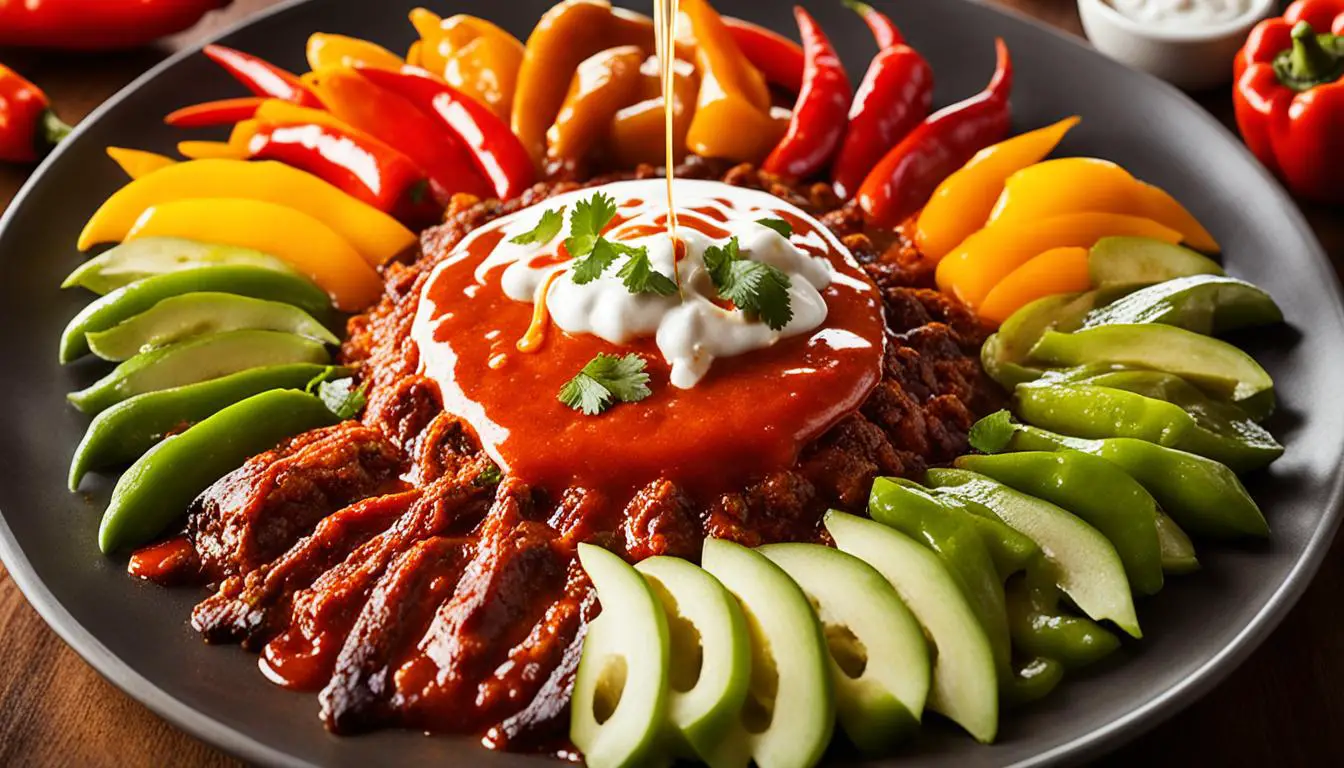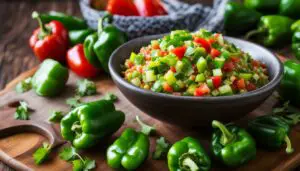Hot sauce is a beloved ingredient that can add a fiery kick to various recipes, transforming them into mouthwatering delights. Whether you’re a fan of spicy flavors or just want to experiment with adding a little heat to your dishes, hot sauce is the perfect ingredient to turn up the excitement in your meals.
So, what exactly is hot sauce in a recipe? Hot sauce is typically made from a combination of hot peppers, vinegar, and other spices. It comes in a variety of heat levels, from mild to extremely hot, allowing you to choose the one that suits your taste buds. The unique blend of flavors in hot sauce – spicy, tangy, and sometimes even sweet – can take a dish from ordinary to extraordinary.
Contents
- 1 Hot Sauce Recipes for Every Meal
- 2 Ways to Use Hot Sauce in Cooking
- 3 Making Hot Sauce at Home
- 4 Different Variants of Hot Sauce
- 5 Enhancing Flavors with Hot Sauce
- 6 Health Benefits of Hot Sauce
- 7 Adding Hot Sauce to Your Pantry
- 8 Hot Sauce in International Cuisines
- 9 Conclusion
- 10 FAQ
- 10.1 What is hot sauce in a recipe?
- 10.2 What are some hot sauce recipe ideas?
- 10.3 How can hot sauce be incorporated into dishes?
- 10.4 How can I make hot sauce at home?
- 10.5 What are the different variants of hot sauce?
- 10.6 How does hot sauce enhance flavors in dishes?
- 10.7 Are there any health benefits to consuming hot sauce?
- 10.8 Why should I add hot sauce to my pantry?
- 10.9 How is hot sauce used in international cuisines?
- 10.10 What are the benefits of using hot sauce in cooking?
- 11 Source Links
Key Takeaways:
- Hot sauce is a popular ingredient that adds a spicy kick to recipes.
- It is made from hot peppers, vinegar, and spices.
- Hot sauce can elevate the flavors of dishes, making them more exciting and flavorful.
- There are various ways to use hot sauce in cooking, such as in sauces, marinades, dressings, and as a condiment.
- Hot sauce can be made at home and comes in different variants with unique flavors and heat levels.
Hot Sauce Recipes for Every Meal
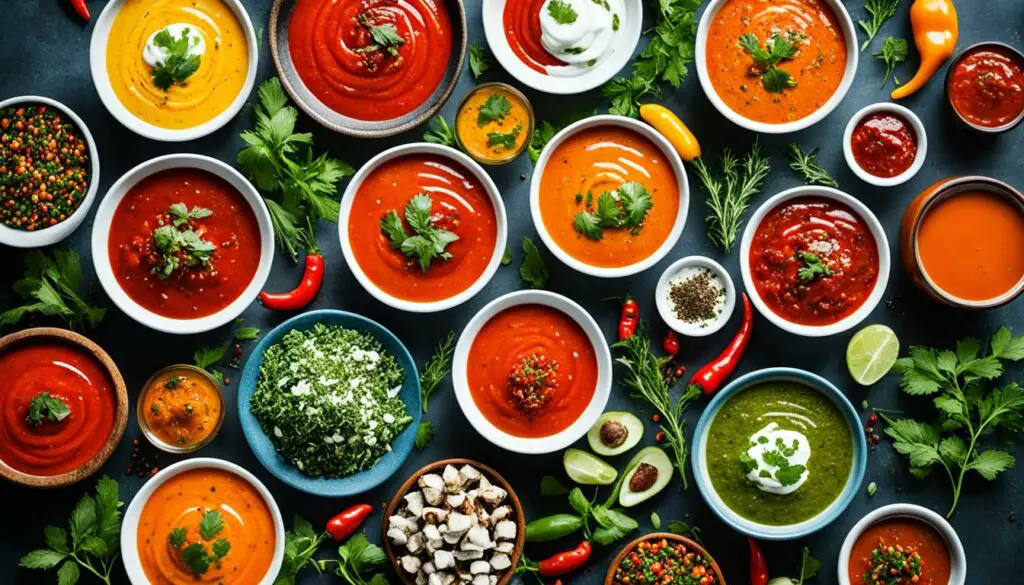
One of the best things about hot sauce is its versatility in recipes. It can be used in breakfast, lunch, dinner, and even snacks. Hot sauce adds a fiery kick and a burst of flavor that takes dishes to the next level. Whether you’re a spice lover or just looking to experiment with new flavors, incorporating hot sauce into your meals is a fantastic idea.
To kickstart your hot sauce culinary journey, here are some delicious hot sauce recipes for every meal:
Bacon and Egg Dish for Breakfast
Start your day with a spicy twist by making a bacon and egg dish infused with hot sauce. Simply cook your bacon until crispy, then fry your eggs in the bacon fat for extra flavor. Drizzle some hot sauce over the eggs before serving. The heat from the hot sauce pairs perfectly with the rich and savory flavors of the bacon and eggs.
Buffalo Chicken Sandwich for Lunch
For a satisfying and spicy lunch option, try a Buffalo chicken sandwich. Grill or bake your chicken until cooked through, then toss it in a mixture of hot sauce and melted butter. Pile the buffalo chicken onto a bun and top it with your favorite accompaniments like lettuce, tomato, and blue cheese dressing. The tangy and spicy flavors of the hot sauce elevate the chicken sandwich to new heights.
Quesadillas for a Quick Meal
When you need a quick and easy meal, quesadillas are the perfect choice. Simply fill tortillas with your favorite cheese, cooked chicken or beef, and a generous drizzle of hot sauce. Grill or pan-fry the quesadillas until the cheese is melted and bubbly. The hot sauce adds a zesty kick that balances the richness of the cheese and meat.
Sheet Pan Meals for Busy Weeknights
If you’re short on time but still want a flavorful and nutritious dinner, try making sheet pan meals with hot sauce. Toss your choice of protein, such as chicken thighs or shrimp, with vegetables like bell peppers, onions, and zucchini. Drizzle hot sauce over everything and roast it all on a sheet pan until cooked through. The hot sauce infuses the entire dish with its distinct flavors, making it a delicious one-pan meal.
But wait, there’s more! Hot sauce can also be used to flavor salmon, burgers, fries, and even corn on the cob. Its versatility knows no bounds, and the options are limited only by your imagination. So don’t be afraid to get creative and explore different flavor combinations with hot sauce.
Ways to Use Hot Sauce in Cooking
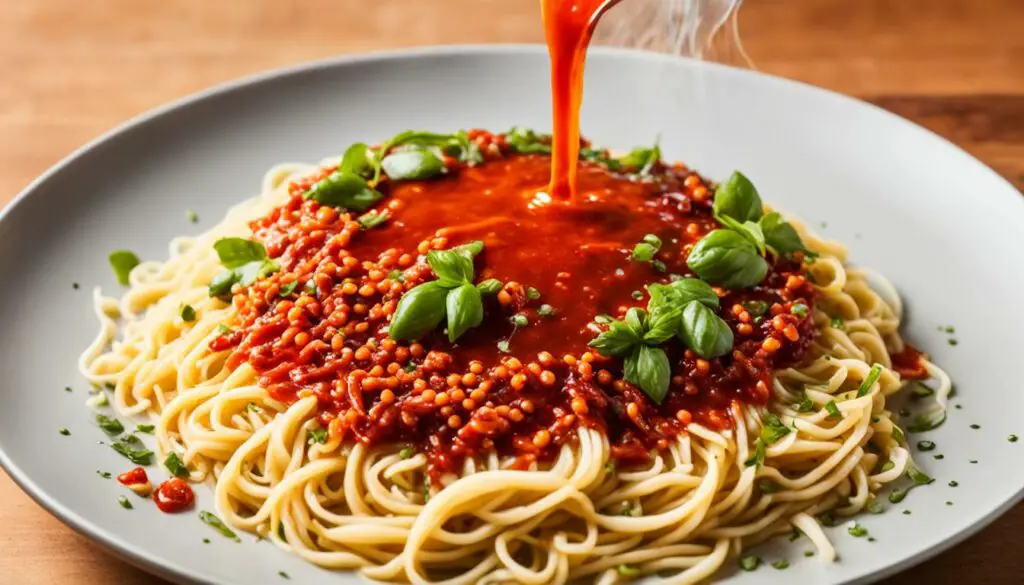
Hot sauce is a versatile ingredient that can be incorporated into dishes in various ways, adding a spicy kick and enhancing the overall flavor. Whether you prefer store-bought hot sauce or homemade varieties, there are countless ways to make the most of this fiery condiment in your cooking.
As an Ingredient:
Hot sauce can be used as a key ingredient in sauces, marinades, and dressings, infusing your recipes with a delightful heat. Adding hot sauce to these preparations not only adds spice but also imparts a depth of flavor that complements a wide range of dishes.
“The combination of hot sauce with other ingredients creates a harmonious balance of flavors that tantalizes the taste buds. It’s all about finding the right balance to achieve the desired level of spiciness in your dishes.” – Chef Michelle
As a Condiment:
Hot sauce can also be used as a condiment, adding a fiery touch to countless dishes. From sandwiches and tacos to stir-fries, soups, and salads, a few drops or a generous drizzle of hot sauce can transform a regular meal into a vibrant and flavorful experience.
“I love using hot sauce as a condiment because it allows me to customize the level of spiciness in my dishes. Plus, it adds a burst of flavor that takes the dish to a whole new level.” – Home Cook Sarah
As a Dip or Drizzle:
Hot sauce isn’t just limited to savory dishes. It can also be used as a dip or drizzle to add a spicy kick to appetizers like pizza, fries, or even grilled vegetables. The tangy and fiery flavors of hot sauce can provide a delicious contrast that elevates the overall taste.
“Using hot sauce as a dip or drizzle adds a zing to my favorite snacks. It’s the perfect way to enjoy that extra heat and flavor without overpowering the dish.” – Food Enthusiast Mark
Exploring Different Flavor Combinations:
With the wide variety of hot sauce options available, you can experiment with different flavors and heat levels to discover unique flavor combinations. From smoky chipotle to tangy habanero, each hot sauce variant offers its own distinct taste that can complement and enhance specific types of cuisine.
To help you explore the possibilities, here’s a table showcasing popular hot sauce variants and their flavor profiles:
| Hot Sauce Variant | Flavor Profile |
|---|---|
| Buffalo Hot Sauce | Tangy with a hint of butter |
| Sriracha | Garlicky with a moderate level of heat |
| Original Hot Sauce | Vinegary and fiery |
| Habanero Hot Sauce | Intensely spicy with a fruity undertone |
By experimenting with different hot sauce variants, you can create unique flavor combinations that suit your palate and bring excitement to your meals.
The versatility of hot sauce makes it a must-have ingredient in any kitchen. Whether used as an ingredient, condiment, dip, or drizzle, hot sauce can add a fiery and flavorful dimension to your dishes. So don’t be afraid to get creative and unleash the spicy potential of hot sauce in your cooking!
Making Hot Sauce at Home

Making hot sauce at home is a fun and rewarding process. Not only do you get to experiment with different flavors and heat levels, but you also have the satisfaction of creating a unique condiment that perfectly suits your taste buds. Whether you prefer a traditional fermented hot sauce or a quick cooked version, the possibilities are endless when it comes to homemade hot sauce.
Traditional Fermented Hot Sauce
One popular method for making hot sauce involves fermentation. This process allows the flavors of the peppers and other ingredients to develop over time, resulting in a complex and richly flavored sauce. Here’s a step-by-step guide on how to make fermented hot sauce at home:
- Choose your hot peppers: Select your favorite hot peppers or a combination of different varieties to create your desired level of heat. Popular choices include jalapenos, habaneros, and Thai chilies.
- Prepare the peppers: Remove the stems and seeds from the peppers, as they can add unwanted bitterness to the sauce. Wear gloves or wash your hands thoroughly after handling hot peppers to avoid any discomfort.
- Create the brine: Dissolve salt in water to create a brine solution. The ratio of salt to water can vary based on personal preference, but a common ratio is 2 tablespoons of salt per 4 cups of water.
- Fermentation process: Place the peppers in a clean glass jar and pour the brine over them, ensuring they are fully submerged. Use a fermentation weight or a clean, food-grade object to keep the peppers submerged to prevent spoilage. Cover the jar loosely with a lid or a cloth to allow gases to escape during fermentation.
- Let it ferment: Store the jar in a dark and cool place, such as a pantry or cupboard, and let it sit for about a week. During this time, beneficial bacteria will convert the sugars in the peppers into lactic acid, contributing to the unique flavor profile of the hot sauce.
- Blend and strain: After the fermentation period, transfer the fermented peppers and brine to a blender and puree until smooth. For a smoother texture, strain the sauce through a fine mesh strainer or cheesecloth.
- Bottle and store: Pour the hot sauce into sterilized glass bottles or jars and refrigerate. The cold temperature will help preserve the sauce, and it can last for several weeks or even months in the fridge.
Quick Cooked Hot Sauce
If you’re looking for a faster homemade hot sauce option, a quick cooked version is the way to go. This method skips the fermentation process but still results in a delicious and flavorful sauce. Here’s a simple recipe for making quick cooked hot sauce:
- Gather your ingredients: Select your preferred hot peppers, such as Fresno, serrano, or cayenne peppers, and gather vinegar, garlic, onion, and other spices for added flavor.
- Prepare the peppers and ingredients: Coarsely chop the peppers, removing the stems and seeds. Dice the garlic and onion.
- Cook the sauce: In a saucepan, combine the peppers, garlic, onion, vinegar, and spices. Bring the mixture to a simmer and cook for about 15-20 minutes until the peppers are softened and the flavors have melded together.
- Blend and strain (optional): For a smooth texture, transfer the cooked sauce to a blender and blend until smooth. If desired, strain the sauce to remove any remaining seeds or larger pieces.
- Bottle and store: Pour the hot sauce into sterilized glass bottles or jars. Let it cool before sealing with a lid. Store the sauce in the refrigerator, where it can last for several weeks.
Making hot sauce at home allows you to experiment with different combinations of peppers, spices, and flavors. You can adjust the heat level by varying the types and quantities of peppers you use. So why not give it a try and create your own signature hot sauce?
Different Variants of Hot Sauce
Hot sauce comes in a variety of variants, each with its own unique flavor profile and heat level. Whether you prefer something mild and tangy or crave a fiery explosion of heat, there’s a hot sauce variant to suit every taste bud. Let’s explore some popular hot sauce variants that can elevate your cooking to new levels of flavor.
1. Buffalo Hot Sauce
Originating from Buffalo, New York, this hot sauce variant is known for its tangy and buttery flavor. It’s a classic choice for chicken wings and can also be used to add zesty flavor to tacos, burgers, and dips.
2. Sriracha
Sriracha is a Thai hot sauce that’s become a staple in many kitchens worldwide. It offers a balance of heat and sweetness with a hint of garlic. This versatile sauce is perfect for adding a kick to stir-fries, noodles, soups, and even cocktails.
3. Original Hot Sauce
When it comes to hot sauce, the original variant is always a reliable choice. Made with a blend of hot peppers, vinegar, and spices, it delivers a straightforward and classic flavor. Drizzle it on eggs, sandwiches, and grilled meats to enhance the taste.
4. Habanero Hot Sauce
If you’re a fan of intense heat, habanero hot sauce is the way to go. Made from fiery habanero peppers, this variant packs a punch. Use it sparingly to add a powerful kick to salsas, marinades, and spicy chili recipes.
These are just a few examples of the endless options available in the world of hot sauce variants. Each one brings its own unique combination of flavors to the table, allowing you to experiment and find the perfect match for your cooking.
Remember, the heat level and flavor intensity can vary greatly between hot sauce variants, so always start with a small amount and adjust to taste. Don’t be afraid to get creative in the kitchen and discover exciting new flavor combinations!
| Hot Sauce Variant | Flavor Profile | Heat Level |
|---|---|---|
| Buffalo Hot Sauce | Tangy and buttery | Mild to medium |
| Sriracha | Spicy and slightly sweet with garlic notes | Medium |
| Original Hot Sauce | Straightforward and classic | Medium |
| Habanero Hot Sauce | Intensely spicy | Hot |
Enhancing Flavors with Hot Sauce
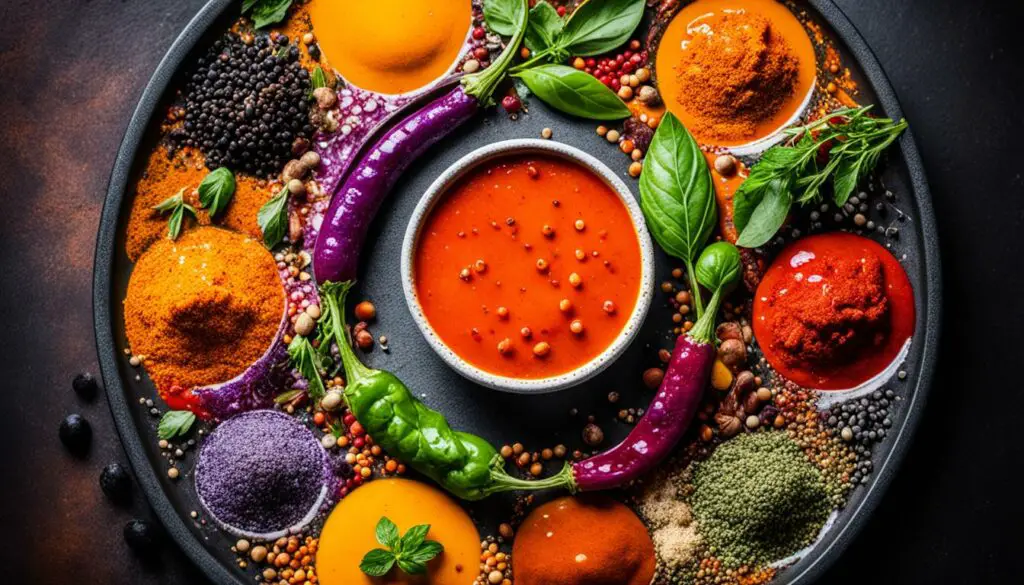
Hot sauce is not just about adding heat; it is also a powerful tool for enhancing the flavors of dishes. With its combination of spicy, tangy, and savory notes, hot sauce can balance and elevate other ingredients in a recipe, adding depth and complexity to the overall taste. Whether you’re looking for a subtle touch of heat or a bold flavor punch, hot sauce can take your dishes to the next level.
Bringing Balance to Your Palate
Hot sauce acts as a flavor enhancer by complementing and spotlighting different taste profiles. Its spiciness adds excitement and complexity to dishes, while its tanginess cuts through rich or fatty flavors, providing a refreshing contrast. The savory elements in hot sauce, such as garlic or umami spices, can deepen the umami notes in a dish, enhancing its overall taste. By carefully selecting and adding the right hot sauce to your recipes, you can create a harmonious balance of flavors that will delight your taste buds.
“Hot sauce has the power to transform a dish from ordinary to extraordinary. It adds that extra kick and layers of flavors that make every bite memorable.” – Chef Emily Rodriguez
Exploring Flavor Combinations
Hot sauce opens up a whole world of flavor possibilities. Its versatility allows you to experiment with different combinations and create unique taste experiences. For example, the bright and zesty flavors of a citrus-based hot sauce can pair beautifully with seafood dishes, while a smoky hot sauce can add an incredible depth to grilled meats. Don’t be afraid to get creative and try out unexpected flavor pairings – hot sauce has the ability to surprise and delight.
Transforming Everyday Staples
One of the greatest strengths of hot sauce is its ability to transform everyday staples into something extraordinary. Whether it’s drizzling hot sauce over scrambled eggs, adding it to macaroni and cheese, or mixing it into a creamy dip, hot sauce has the power to elevate humdrum dishes into flavor-packed creations. It’s a simple yet effective way to add excitement and interest to your meals.
Embracing the Heat
Hot sauce is not just for those who love spicy food. Even if you have a low tolerance for heat, you can still enjoy the benefits of hot sauce by choosing milder variants or using it sparingly to add a subtle kick. Many hot sauces offer a range of heat levels, allowing you to find the perfect balance that suits your palate. Don’t be afraid to start small and gradually work your way up as you develop a taste for spicier flavors.
So, next time you’re in the kitchen, reach for that bottle of hot sauce and let it work its magic. Enhance the flavors of your dishes, explore unique combinations, and embrace the exciting world of hot sauce. Your taste buds will thank you!
Health Benefits of Hot Sauce
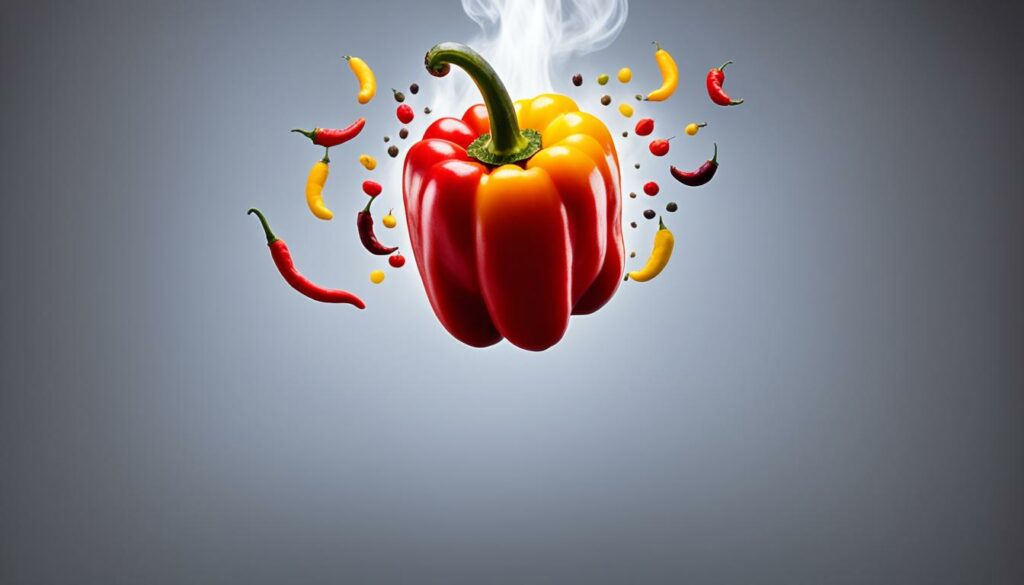
Hot sauce isn’t just a flavorful addition to your meals; it also offers some potential health benefits. The secret lies in capsaicin, a compound found in hot peppers that gives hot sauce its spicy kick. Capsaicin has been linked to various health advantages, making hot sauce more than just a condiment.
Boosts Metabolism and Promotes Weight Loss
Research suggests that capsaicin can help boost metabolism, increasing the body’s ability to burn calories. In fact, a study published in the American Journal of Clinical Nutrition found that consuming capsaicin-rich foods led to a temporary increase in metabolic rate. This means that adding hot sauce to your meals may aid in weight loss efforts.
Reduces Appetite
Hot sauce may also help reduce appetite, making you feel fuller and more satisfied after a meal. The spiciness of hot sauce activates receptors in the mouth, which can trigger a feeling of satiety. This can be particularly beneficial for individuals looking to manage their calorie intake and prevent overeating.
Offers Anti-Inflammatory Properties and Provides Pain Relief
Capsaicin has been found to have anti-inflammatory properties, which can help reduce inflammation in the body. Additionally, it may provide pain relief by blocking pain signals and reducing the release of substance P, a neurotransmitter involved in the perception of pain. Some studies have even shown that capsaicin can be effective in relieving pain associated with conditions such as arthritis and neuropathy.
It’s important to note that the health benefits of hot sauce are primarily attributed to the capsaicin content, rather than hot sauce specifically. While hot sauce can be beneficial in moderation, excessive consumption may lead to digestive discomfort for some individuals. As with any dietary changes, it’s always best to consult with a healthcare professional to ensure it aligns with your individual health needs.
With its potential health benefits and fiery flavor, hot sauce can be a delicious way to spice up your meals. Just remember to enjoy it in moderation and savor the unique flavors it brings to your favorite dishes.
Adding Hot Sauce to Your Pantry
Hot sauce is a staple condiment that can take your dishes from bland to bold with just a few drops. Whether you’re a fan of fiery flavors or just enjoy a hint of heat, adding hot sauce to your pantry is a must. Not only does it add a spicy kick to your meals, but it also packs a punch of flavor that can enhance a wide range of dishes.
When choosing hot sauce for your pantry, there are a few things to consider. First, think about your heat tolerance. If you prefer a milder spice, opt for a hot sauce with a lower Scoville heat unit (SHU) rating. On the other hand, if you’re a heat seeker, go for a sauce with a higher SHU rating to bring the fire to your palate.
Another aspect to consider is flavor. Hot sauce comes in a variety of variants, each with its own unique blend of spices and ingredients. Some sauces have a smoky flavor profile, while others are tangy or even sweet. Experiment with different brands and variants to find the ones that tickle your taste buds just right.
“Hot sauce is like a secret ingredient that can transform a simple dish into something extraordinary. It adds depth, complexity, and a kick that keeps you coming back for more.” – Chef Maria Martinez
Having hot sauce on hand in your pantry ensures that you can easily add a fiery kick to any dish whenever you want. From drizzling it over tacos and burgers to mixing it into dressings and marinades, the possibilities are endless. Hot sauce can even be used as a dipping sauce or a zesty addition to your favorite snacks.
To give you a better idea of the options available, here’s a table showcasing some popular hot sauce brands and their heat levels:
| Hot Sauce Brand | Scoville Heat Unit (SHU) Rating |
|---|---|
| Tapatío | 3,000 |
| Frank’s RedHot | 2,000 |
| Cholula | 1,000 |
| Sriracha | 2,200 |
Remember, everyone’s taste buds are different, so don’t be afraid to explore and find the hot sauce that matches your preference. Whether you’re adding a dash of heat to a plate of eggs or spicing up your favorite pasta dish, hot sauce is a versatile ingredient that can elevate your culinary creations.
Hot Sauce in International Cuisines
Hot sauce is not limited to American cuisine; it is widely used in various international cuisines. Different cultures have their own versions of hot sauce, such as Sriracha in Thai cuisine, harissa in North African cuisine, and gochujang in Korean cuisine. These sauces add a distinct flavor and heat to traditional dishes and are an integral part of their culinary heritage. Exploring hot sauces from different cultures can introduce you to new and exciting flavor profiles.
Conclusion
Hot sauce is a game-changer in the kitchen. Whether you’re a culinary enthusiast or just someone who enjoys a little extra heat, hot sauce can take your recipes to new heights. From breakfast favorites like bacon and eggs to savory lunches like Buffalo chicken sandwiches, hot sauce adds a spicy kick that elevates the flavors of any dish.
With the wide variety of hot sauce variants available, you can choose the one that suits your preference and desired heat level. Whether you opt for the tangy Buffalo hot sauce, the bold Sriracha, or the fiery habanero hot sauce, each variant brings its own unique flavor profile to your meals.
What’s great about hot sauce is its versatility. You can use it as an ingredient in sauces, marinades, and dressings, or as a condiment to heighten the flavors of sandwiches, tacos, stir-fries, and more. And if you’re feeling adventurous, why not try making your own hot sauce at home? It’s a fun and rewarding process that allows you to customize the flavors to your liking.
So, whether you’re adding hot sauce to your pantry or exploring international cuisines, hot sauce is a staple ingredient that brings a whole new dimension to your cooking. Get creative, experiment with different combinations, and enjoy the spicy goodness that hot sauce brings to your dishes. Your taste buds will thank you!
FAQ
What is hot sauce in a recipe?
Hot sauce is a spicy condiment made from hot peppers, vinegar, and other spices. It adds heat and flavor to various recipes, enhancing the overall taste of dishes.
What are some hot sauce recipe ideas?
Some popular hot sauce recipe ideas include bacon and egg dishes for breakfast, Buffalo chicken sandwiches for lunch, quesadillas for a quick meal, and sheet pan meals for busy weeknights. Hot sauce can also be used to flavor salmon, burgers, shrimp, fries, and corn on the cob.
How can hot sauce be incorporated into dishes?
Hot sauce can be used as an ingredient in sauces, marinades, and dressings to add a spicy kick. It can also be used as a condiment to flavor sandwiches, tacos, stir-fries, soups, and salads. Additionally, hot sauce can be used as a drizzle or dip for pizza, fries, and other appetizers.
How can I make hot sauce at home?
Hot sauce can be made at home by fermenting hot peppers with vinegar and other ingredients or by simmering the peppers with vinegar and spices. Both methods result in delicious hot sauce that can be customized to your preferred flavors and heat level.
What are the different variants of hot sauce?
Some popular variants of hot sauce include Buffalo hot sauce, Sriracha, original hot sauce, and habanero hot sauce. Each variant has its own unique flavor profile and heat level, allowing you to choose the ones that suit your taste preferences.
How does hot sauce enhance flavors in dishes?
Hot sauce adds depth and complexity to the overall taste of dishes. Its combination of spicy, tangy, and savory flavors can balance and elevate other ingredients, making the dish more enjoyable.
Are there any health benefits to consuming hot sauce?
Hot sauce contains capsaicin, a compound found in hot peppers, which has been linked to various health benefits. Capsaicin may help boost metabolism, reduce appetite, and promote weight loss. It may also have anti-inflammatory properties and provide pain relief. However, it’s important to consume hot sauce in moderation as part of a healthy diet.
Why should I add hot sauce to my pantry?
Hot sauce is a versatile condiment that can be used in a variety of recipes to spice up your meals. Having hot sauce on hand ensures that you can add a fiery kick to any dish whenever you want.
How is hot sauce used in international cuisines?
Hot sauce is not limited to American cuisine and is widely used in various international cuisines. Different cultures have their own versions of hot sauce, such as Sriracha in Thai cuisine, harissa in North African cuisine, and gochujang in Korean cuisine. These sauces add a distinct flavor and heat to traditional dishes.
What are the benefits of using hot sauce in cooking?
Hot sauce is a versatile ingredient that adds spice and flavor to recipes. It can be used in a range of dishes, from breakfast to dinner, and even snacks. Whether you choose to use store-bought hot sauce or make your own at home, it’s a great way to enhance the taste of your meals.

